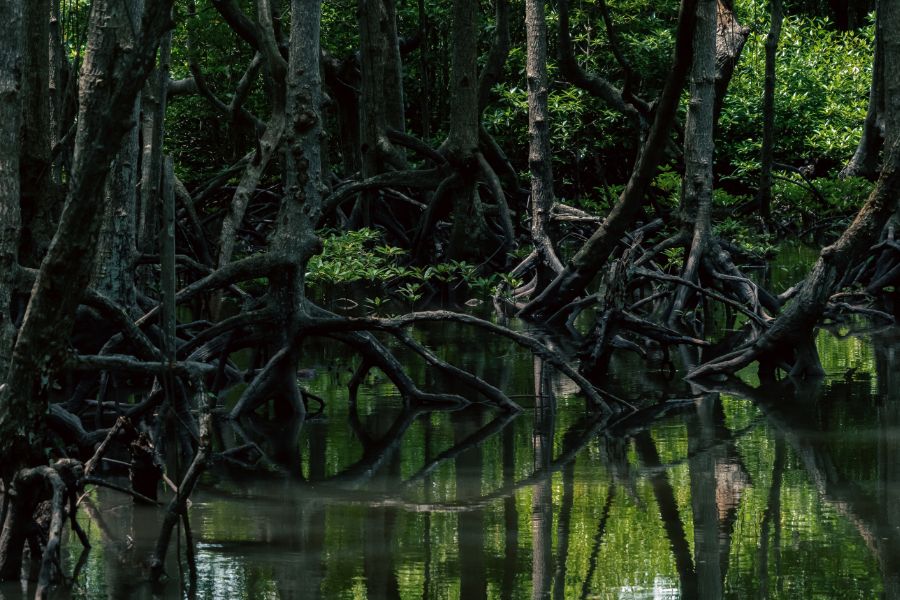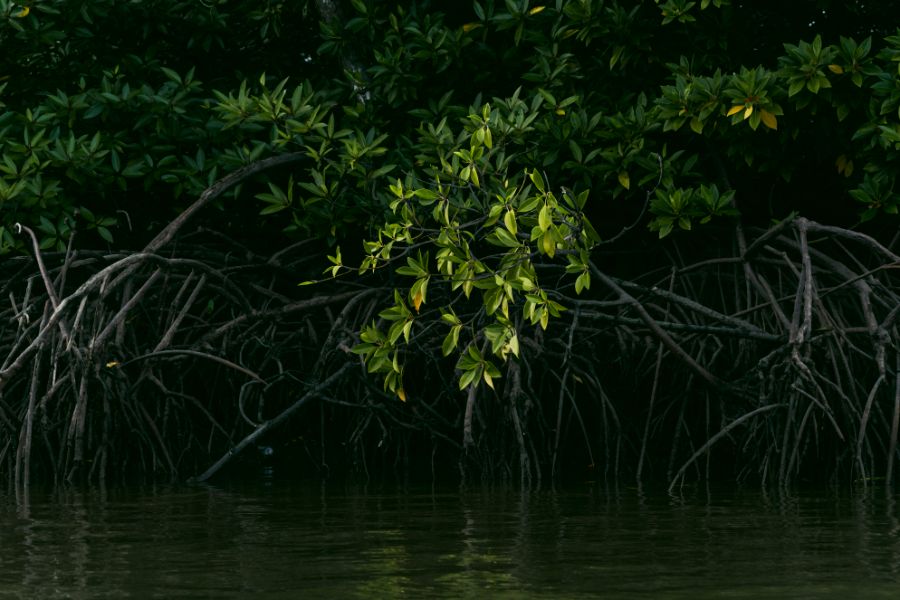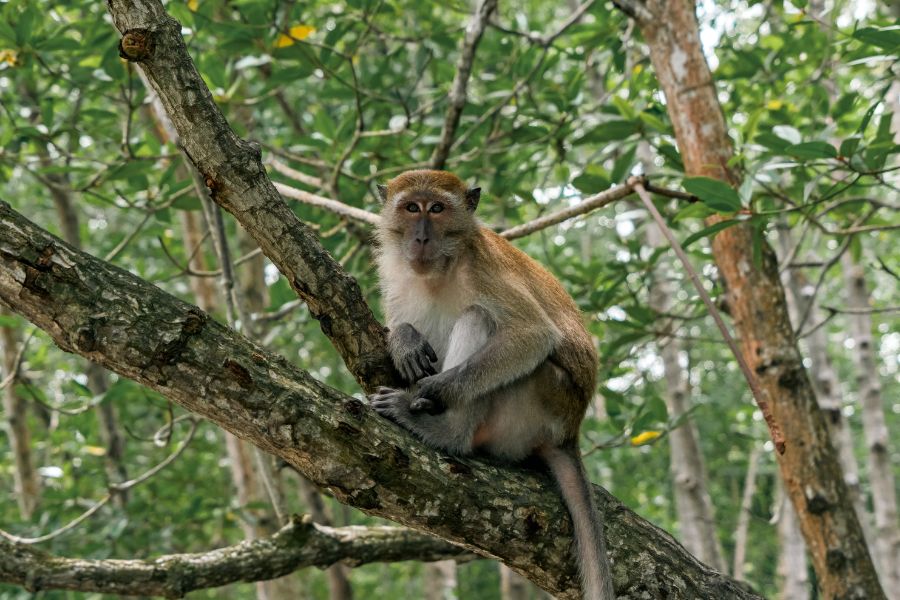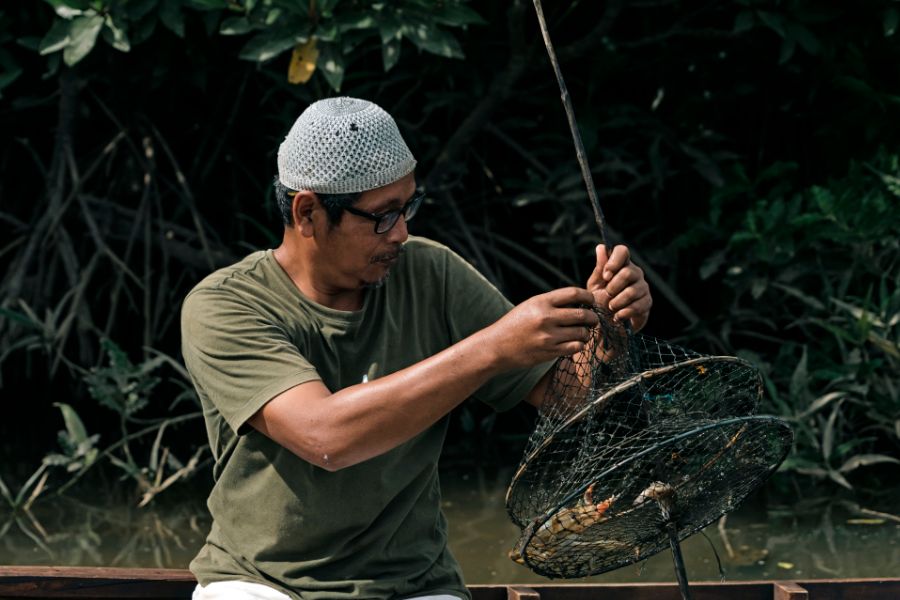On the Indonesian island of Sumatra, mangroves are a source of life, natural resources and economic activity for local communities. Threatened by industrial palm oil production, intensive aquaculture and charcoal exports, this forest ecosystem between land and sea is disappearing.
A unique forest ecosystem between land and sea
The mangrove is a plant formation that covers 75% of the coasts, deltas and estuaries of the intertropical regions. This forest ecosystem grows on the foreshore, the part of the coastline that is submerged during the highest tides and emerged during the lowest. Also known as the tidal balance areas, the foreshore is a specific biotope with relatively uniform physical and chemical characteristics, conducive to the development of the main mangrove trees. Nearly one hundred different species of mangrove trees have been identified in America, Africa and Asia. All of them have the ability to adapt to high salinity, root immersion and low soil oxygenation due to silt. For example, where Rhizophora have stems that anchor directly in the mud, Ceriops have emergent stilt-like roots arranged in arches that allow them to rise above the water level. In Avicennia, vertical stems, called pneumatophores, have small slits that open at low tide to allow respiration. But the mangrove is a complex and diverse ecosystem that grows in symbiosis with other plant species, such as noni or nipa palm in Sumatra. These trees thrive in the same conditions as the mangrove trees and enrich the mangrove ecosystem with a diversity of species essential to its balance.


Mangroves provide a wide variety of benefits
Mangroves are vital for biodiversity and local communities. Multifunctional by nature, it provides many ecosystem services, both environmental and socio-economic.
Thanks to the rapid growth of mangrove trees and the size of their biomass, mangroves are a carbon sink that can store up to ten times more CO2 per hectare than terrestrial forests. It thus sequesters about 10% of global carbon emissions, even though it represents only 1% of the surface area of tropical forests, and contributes directly to the mitigation of climate change.
Mangroves are a true ecological niche whose conditions and resources are absolutely necessary for the maintenance of the species it shelters. They are the habitat of numerous animal and plant organisms, whether terrestrial or underwater. Because it is an ecotone, in other words a transition zone between two ecosystems, it is particularly conducive to the creation of biological corridors, these environments that functionally link different habitats that are vital for a species. Thus, about 80% of marine animal species in the Indian Ocean find refuge in mangroves during a stage of their life. The mangrove root system serves as a spawning ground and nursery for hundreds of species of shrimp, crustaceans and fish.
The root system of the mangrove also gives it an essential role in the preservation of soil and water resources. Thanks to their roots, mangroves fix the unstable soils in which they grow, and therefore limit coastal erosion and sea level rise. They absorb some of the debris and organic pollutants, such as phosphorus and nitrogen, that are discharged into rivers or carried by ocean currents. They can even play a role in cleaning up domestic wastewater.
Thanks to its density, the mangrove constitutes a bulwark to protect territories against climatic hazards, and thus acts as a buffer zone by breaking the waves and attenuating the power of gusts. On 26 December 2004, an undersea earthquake occurred north of Sumatra and caused a tsunami that spread from South Asia to East Africa. In the aftermath of the disaster, studies conducted as part of the Third Asian Wetlands Symposium showed that coastlines with intact natural barriers, including mangroves, were less affected by the waves.
Rich in valuable resources such as fish, medicine, forestry, fruit and honey, mangroves are essential to local populations and their economic activities. It supports fishing and local trade, provides wood from its dead trees for heating and construction, fibres and ink for textiles, fruit and honey from its flowers and even medicinal remedies. The mangrove thus contributes to the livelihoods, health and security of coastal communities.


In Sumatra, the mangrove is disappearing due to anthropic pressure
Indonesia is the country most affected by deforestation in the world, with forests disappearing twice as fast as in the Amazon. The mangrove, in particular, is the forest ecosystem that is disappearing at the most alarming rate. While North Sumatra province had 200,000 hectares of mangroves in 1987, less than half of that remains today with only 83,000 hectares. In Aceh province, the mangroves were also severely degraded by the 2004 tsunami. Land use change and forest degradation are the main causes of mangrove loss in Sumatra. Mangrove forests tend to be replaced by oil palm monocultures or intensive aquaculture ponds, or are illegally cut down for charcoal production.
Palm oil, the vegetable oil extracted from the pulp of the oil palm fruit, is still widely used in processed food. Today, around 85% of the world's palm oil production comes from plantations in Indonesia and Malaysia. It is directly responsible for deforestation, since oil palm plantations are carried out at the expense of natural forest ecosystems, particularly mangroves on the Sumatran coast. Encouraged by the banks, which offer more attractive insurance for agricultural land with oil palms, villagers are planting more and more of them on Sumatra's coastlines, even though the tree is unsuited to the pH and salinity of the coastal soil and does not provide them with any additional income. As for the industrial companies seeking plots for oil palm plantations, they have techniques for adapting coastal soils to this crop, notably by creating freshwater canals in place of natural mangrove ecosystems.
In Sumatra, mangrove trees are also cut down to make way for intensive aquaculture ponds, especially for shrimp farming. These ponds are profitable for a few years, but then their productivity decreases and they are abandoned as they are. Other areas are then deforested a little further away. This practice is directly responsible for deforestation and also contributes to the pollution of groundwater, which becomes unusable because of the infiltration of salty and antibiotic-polluted water.
The production of charcoal from mangroves, mainly for export to Europe and Japan, is also the cause of illegal logging in these ecosystems, which are now protected by the Indonesian government.


Reforest'Action's involvement in Indonesia dates back to 2017. With the aim of restoring and extending the native mangrove on the island of Sumatra in order to protect its coastline and secure the economic activities linked to it, a sustainable partnership was established that year with the local NGO Yagasu. Since the autumn of 2021, Reforest'Action has extended its range of activities by financing a second mangrove restoration project in Sumatra, designed to last three years and carried out by the NGO Yakopi.